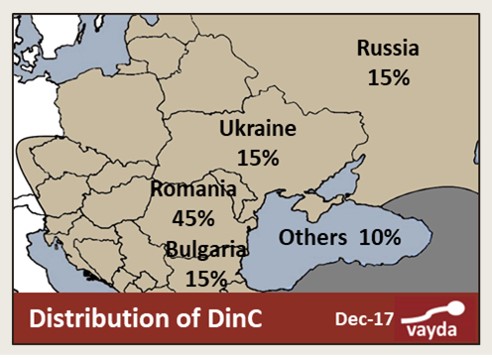Hi Dibran, where have you found that ancestor clade was found in Sweden?
Ancestor clade of I-CTS10228 is L621. The only known ancient sample of I-L621 was found in Prehistorical Portugal:
https://genetiker.wordpress.com/y-snp-calls-for-ca117b/
https://www.ncbi.nlm.nih.gov/pmc/articles/PMC5531429/
https://journals.plos.org/plosgenetics/article?id=10.1371/journal.pgen.1006852
I-L621 is ancestral for Dinarik I-CTS10228 and Disles
https://www.yfull.com/tree/I-L621/
In modern samples, one region pops up as interesting for early diverged subclades of L621, it is Upper Raine basin (Southwestern Germany and Alsace) where few early separated branches of Disles and one of I-CTS10228* have been found:
Disles A' I-BY37319: P37+ M423+ CTS5375+ L621+ BY37319+ (A17060+) England and Germany (Baden-Württemberg);
Disles B' I-CTS10936*: P37+ M423+ BY37319+ L621+ CTS10936+ S19848- Germany (Baden-Württemberg);
Disles B' I-S19848*: P37+ M423+ L621+ CTS10936+ S19848+ CTS4002- Germany (Baden-Württemberg), Sweden;
Disles B' I-Y44771 P37+ M423+ L621+ CTS10936+ S19848+ CTS4002+ Y44771+ Germany (Baden-Württemberg), South Eastern Poland;
Disles B' I-BY31905: P37+ M423+ L621+ CTS10936+ S19848+ CTS4002+ FGC20479+ BY31905+ Ireland, Scotland, England (more than 10 families from British Isles in this group);
Disles B' I-FGC20473: P37+ M423+ L621+ CTS10936+ S19848+ CTS4002+ CTS11768+ FGC20479+ FGC20473+ Germany (unknown location, probably Dirminger near France and Luxembourg border with Germany), Scotland (2 families), England (2 familes);
I-CTS10228* (Y3120-) Alsace region France.
Based on the data it is possible that ancestor of I-CTS10228>Y3120 lived on the west before moved in Eastern Europe, approximate time period might be 2200-2500 years ago, but even 4000 years ago based on formation age of I-CTS10228* from Alsace. So it can be some known historical moment but also unknown.





